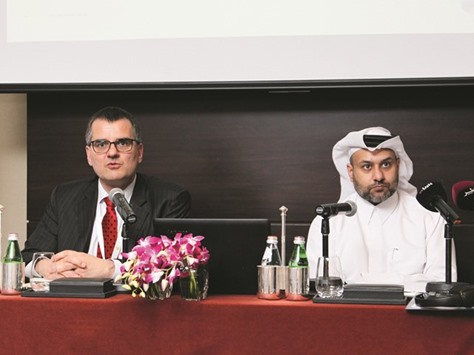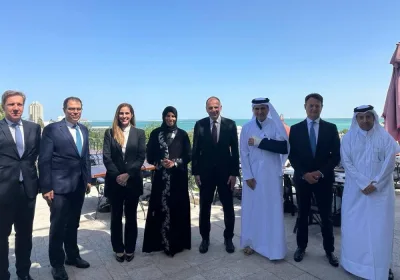Qatar’s insurance industry, which witnessed $2bn in premiums in 2015, is poised for further growth as the market potential remains “untapped” and in view of low penetration, according to a top official of Qatar Financial Center Authority (QFCA).
Moreover, the insurance sector in Qatar is expected to be “resilient” compared with the Middle East and North Africa (Mena), where insurance executives sounded less bullish on premium growth outpacing the regional growth, said the QFCA’s survey Mena Insurance Barometer 2016.
“Since inception of MultaQa, market value almost tripled to $2bn, a compound annual growth rate (CAGR) of 11%. In Qatar most of the market potential remains untapped,” QFCA chief executive Yousef Mohamed al-Jaida told reporters here, quoting Business Monitor International.
He said the insurance penetration is low at 1.1% of gross domestic product (GDP) compared to the world average of more than 6%, he said.
“Looking at the growth in past years, premium will continue to grow at single digit number,” he said, adding the key drivers in the insurance segment would be the continued growth parameters, a growing young population and the compulsory risk covers.
Stressing that 2016 barometer confirmed resilience in the (Mena) region’s insurance market, he said the majority of executives polled continue to believe that premium growth will outpace GDP expansion, which is expected to slow going forward.
Highlighting that pricing outlook for the region’s personal lines business has improved, al-Jaida said more fundamentally, interviewees see opportunities from fiscal tightening as governments consider transferring additional risk management and provision to the private insurance sector, with medical insurance being the most prominent example.
Kai-Uwe Schanz, chairman of MultaQa 2016, said slowing economic growth and continued geopolitical instability continue to weigh on executive sentiments in the Mena insurance markets.
“However, the industry is believed to remain resilient with 61% of the executives polled expecting regional premiums to outgrow GDP,” he said.
Although the barometer continue to be bullish on personal business lines, benefiting from broadening and deepening compulsory insurance requirements as well as corrective pricing and reserving measures; it found “deteriorating” outlook towards such as commercial lines as marine and engineering due to economic headwinds and fiscal tightening.
The region’s low insurance penetration is considered to be the key opportunity for future growth, it said, adding the ratio of premiums to GDP was a mere quarter of the global average.
The barometer found that 89% and 26% of executives polled view current prices in Mena commercial and personal lines, respectively, below the average of the past five years.
It found 58% and 97%, respectively, expect commercial and personal lines rates to remain stable or improve over the next 12 months, which compared with the previous year, indicates a “deteriorating” outlook for commercial lines and improved expectations for personal lines.
“The commercial and regulatory pressure for higher prices in personal lines is stronger than in the wholesale segments of the market,” it said. Page 2

Schanz and al-Jaida unveil the Mena Insurance Barometer yesterday. Qatar’s insurance sector is expected to be more u201cresilientu201d compared to the Middle East and North Africa, the study said.


